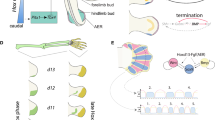Abstract
Based on anatomical and developmental similarities, hemichordates are thought to be most closely related to chordates. However, so far very few developmental genes have been characterized from hemichordates. To gain molecular insight into the developmental mechanisms involved in the origin and evolution of chordates, we investigated the expression of a fork head/HNF-3 (PfHNF3) gene in the acorn worm embryo. Chordate fork head genes are implicated in the formation of endoderm, notochord and floor plate. We found that a PfHNF3 transcript was first detected at the early blastula stage; the signal of in situ hybridization was found in the vegetal plate cells, invaginating endoderm and then in the archenteron. By the late gastrula and into the early tornaria larva stages, an intense signal remained in the anterior region of the archenteron, while the expression in the other regions of archenteron decreased. The intense signal was retained in the pharynx of the tornaria larva. A comparison of the pattern of PfHNF3 with that of HNF-3 genes of sea urchin, ascidian, amphioxus and vertebrate suggests a possible acquisition of new functions of the gene during deuterostome evolution.
Similar content being viewed by others
Author information
Authors and Affiliations
Additional information
Received: 2 February 1999 / Accepted: 2 August 1999
Rights and permissions
About this article
Cite this article
Taguchi, S., Tagawa, K., Humphreys, T. et al. Characterization of a hemichordate fork head/HNF-3 gene expression. Dev Gene Evol 210, 11–17 (2000). https://doi.org/10.1007/PL00008181
Issue Date:
DOI: https://doi.org/10.1007/PL00008181




